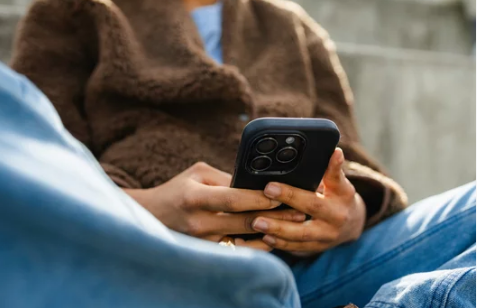Bluetooth is a powerful wireless technology that allows your phone to connect to a wide range of devices—headphones, speakers, smartwatches, car systems, and more. But when Bluetooth won’t connect, it can be incredibly frustrating. Whether you’re using Android or iPhone, there are several quick and effective solutions to fix the issue.
In this guide, you’ll learn exactly why Bluetooth isn’t working on your phone and how to troubleshoot it step by step.
Common Reasons Why Bluetooth Won’t Connect
Before diving into the fixes, let’s look at why Bluetooth connections sometimes fail:
- Device is out of range
- Bluetooth not enabled on one or both devices
- Compatibility issues between devices
- Interference from other wireless signals
- Corrupted Bluetooth cache or settings
- Outdated software or firmware
- Previously paired devices causing conflicts
Understanding the possible causes helps in applying the right solution quickly.
1. Turn Bluetooth Off and On Again
Reset the Wireless Connection
Sometimes, simply turning Bluetooth off and on can fix minor bugs.
- On Android/iPhone: Swipe down to access Quick Settings or Control Center, then toggle Bluetooth off. Wait a few seconds and turn it back on.
After toggling, try reconnecting to the device.
2. Restart Both Devices
Flush Temporary Glitches
If Bluetooth still doesn’t work, restart your phone and the device you’re trying to pair it with. Temporary software hiccups can prevent proper connections.
- Turn off your phone and Bluetooth device.
- Wait 30 seconds.
- Turn them both back on and try pairing again.
This simple step often clears up unknown connection issues.
3. Remove and Re-Pair the Device
Start the Connection Fresh
If you’ve paired the device before and now it won’t connect:
- Go to Settings > Bluetooth on your phone.
- Find the device in the list of Paired Devices.
- Tap the gear icon (Android) or the “i” icon (iPhone) and choose Forget, Unpair, or Remove This Device.
- Now put the Bluetooth device into pairing mode (check the manual if you’re unsure how).
- Reconnect from your phone by scanning and pairing again.
This wipes old connection settings and allows a clean start.
4. Check Bluetooth Range and Interference
Distance and Obstructions Matter
Bluetooth typically works best within 30 feet (10 meters). If you’re too far from the device or have thick walls or other wireless signals (Wi-Fi, microwaves) interfering, the connection may drop or fail to initiate.
- Move closer to the device.
- Remove obstacles like walls, appliances, or metal objects.
- Turn off nearby Bluetooth devices that may cause interference.
5. Clear Bluetooth Cache (Android Only)
Fix Corrupted Connection Settings
Over time, saved Bluetooth data can get corrupted and block new connections.
To clear Bluetooth cache:
- Go to Settings > Apps > Show system apps.
- Find and tap on Bluetooth.
- Tap Storage > Clear Cache and Clear Data.
- Restart your phone and try reconnecting.
Note: This step may vary slightly depending on your Android version or brand.
6. Update Your Phone’s Software
Ensure Compatibility and Bug Fixes
Outdated system software can affect Bluetooth functionality.
- On Android: Go to Settings > System > Software Update.
- On iPhone: Go to Settings > General > Software Update.
Install any available updates and restart your device. Updates often include important fixes for connectivity issues.
7. Check Device Compatibility
Some Devices Simply Can’t Pair
Make sure the device you’re trying to connect to is compatible with your phone and supports the right Bluetooth protocols. For example:
- Some wireless earbuds may not work with older phone models.
- Fitness bands or smartwatches may require a companion app to pair successfully.
Check the manufacturer’s website or support materials to verify compatibility and setup instructions.
8. Reset Network Settings
Wipe All Wireless Connections for a Fresh Start
If Bluetooth problems persist, resetting network settings can help. This will also reset Wi-Fi and mobile settings, but won’t delete personal data.
On Android:
- Go to Settings > System > Reset options > Reset Wi-Fi, mobile & Bluetooth.
On iPhone:
- Go to Settings > General > Transfer or Reset iPhone > Reset > Reset Network Settings.
After the reset, re-pair your Bluetooth devices.
9. Try Safe Mode (Android Only)
Test for Third-Party App Conflicts
Some apps may interfere with Bluetooth connections. Booting into Safe Mode disables third-party apps and helps diagnose the issue.
To enter Safe Mode:
- Hold down the Power button.
- Tap and hold Power off on the screen.
- Tap OK when prompted to enter Safe Mode.
Try Bluetooth again. If it works fine in Safe Mode, a recently installed app may be causing the issue. Restart to exit Safe Mode.
10. Check for Firmware Updates on Bluetooth Devices
The Problem Might Not Be Your Phone
Some Bluetooth devices (especially headphones, smartwatches, and speakers) require firmware updates to work properly with new phones or operating systems.
- Check the manufacturer’s app or website for update instructions.
- Follow update procedures carefully and try pairing again afterward.
When to Contact Support or Consider Repairs
If you’ve tried everything and Bluetooth still won’t connect, the issue could be hardware-related:
- A damaged Bluetooth antenna inside the phone.
- Internal hardware faults from a drop or water damage.
In that case, contact your phone manufacturer, visit a certified technician, or schedule a repair—especially if the phone is still under warranty.
Final Thoughts: Solve Bluetooth Issues with Confidence
Bluetooth connection problems can be annoying, but most are fixable with a few simple steps. Whether you’re dealing with a temporary glitch, outdated software, or a compatibility issue, following the steps above will help you get reconnected fast.
The key is to start with simple fixes—restart, forget the device, and re-pair—before moving on to more advanced solutions like resetting network settings or updating firmware.
Stay connected, wire-free!
Also Read :
